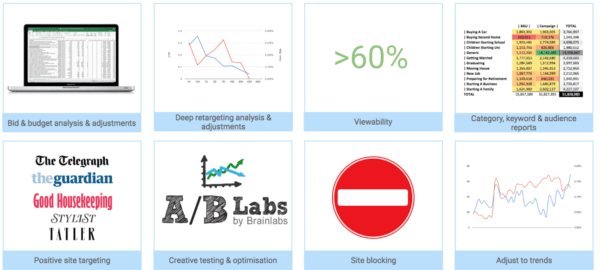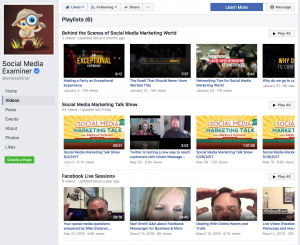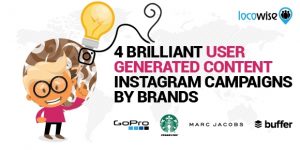With so much data at our disposal, there’s a fine line between relevant and creepy. Columnist Grace Kaye shares strategies for getting the right level of personalization in programmatic.

Programmatic is one of the most exciting channels for personalization. We have lots of data at our disposal, which we can use to tailor to whom we show ads, when we show it to them, and what we show them. Amazing.
But not always amazing. There’s a fine line between relevant and creepy, and if you cross to the bad side, it can be catastrophic for performance and brand reputation.
The problem is that the line is not fixed; every brand and every campaign is unique, along with the level of personalization that works best. In this post, I’d like to share my two top strategies for finding what the right level is: Master your targeting, and master your brand. Read on for the path to non-creepiness.
Master your targeting
If we’ve learned anything from all this brand safety fuss, it’s that many programmatic advertisers are still not in control of their targeting. Appearing alongside terrorist videos is at the extreme end of this problem; inappropriate personalization is closer to the middle. Both reflect a lack of control. How do you get control?:
- Simplify your tech stack
Programmatic is ridiculously complex. In a past article, I’ve talked about the increasingly complex supply chain of programmatic.
We should all be looking toward a one-DSP (demand-side platform) approach. Reach isn’t truly an issue, since a single DSP can, in most instances, provide more than enough of it. Cut out whatever you don’t need, and if you do require some kind of third-party tool, at least ensure it’s easy to plug into your existing stack.
- Openly collect data
Rather than taking a covert approach with personalized ads, data that’s collected openly will inevitably lead to better performance. Before the General Data Protection Regulation (GDPR) goes into effect in May, forcing us all to do this, advertisers can get ahead of the game by changing the way they collect user data on their sites.
If you tell consumers that their data is going to be used to improve the relevance of the ads they receive, they will generally respond more positively to personalization. Indeed, a study by the Thurgau Institute of Economics (2015) concludes that “transparency leads to an increase in the individuals’ willingness to share personal information as the individual is able to see and assess the collected information and the possible use of it.”
- Test, test, test and learn
This is a huge advantage of programmatic as a platform. You have the opportunity to run experiments on all facets of your targeting and to continue to optimize throughout the course of a campaign.

Mastering your brand
Personalization is ultimately a branding decision. To what extent do your customers want you to personalize the way you communicate with them, and to what extent will they be comfortable with it? Aside from all the discussions around tech and data, the most important step to successful ad personalization is a good old-fashioned marketing strategy.
If you’re a financial services brand, for example, a high level of personalization is unlikely to have a positive impact on your audience — people are generally more sensitive about these sorts of data. If your primary offering is dog food or beer, there may be more scope.
Understanding your audience is essential. Demographic differences may affect attitude toward personalization, with the younger generation being generally more comfortable with data sharing and less concerned about data privacy.
Familiarity with your brand can have a significant impact, too, so it may pay off to modify the level of personalization according to how well a customer already knows your brand.
And, because this is programmatic, you have the opportunity to test and learn during the course of a campaign. Customers might even be segmented based on their responses to personalization — this is the great benefit of such a data-rich platform.
Personalization is great when you get it right
As I demonstrated in my last post about VOD (video on demand) advertising, personalizing content and targeting according to the audience can cause a huge uplift in performance. Apart from increased relevance, personalization can also help to build a brand’s credibility through the extra effort needed to tailor their advertising to the individual.
As the scope of programmatic widens, and as advertisers gain access to an ever larger supply of personal data, let’s hope we can improve this crucial aspect of how we communicate with consumers. Getting personalization right is hard, but it has the potential to greatly improve the relationship between advertisers and individuals.
Some opinions expressed in this article may be those of a guest author and not necessarily Marketing Land. Staff authors are listed here.
Marketing Land – Internet Marketing News, Strategies & Tips
(77)
Report Post





